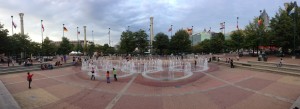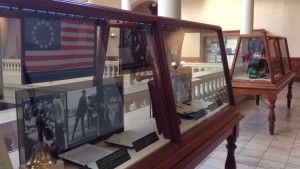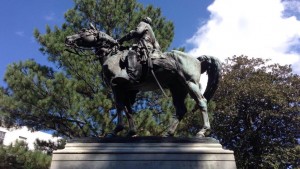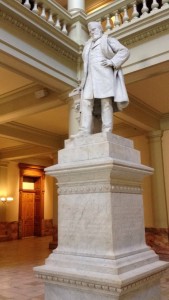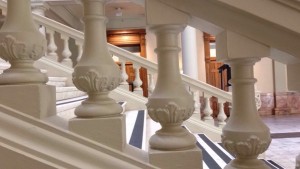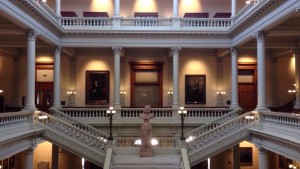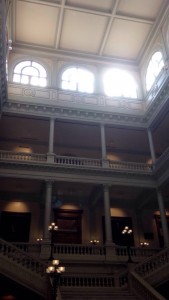Located several blocks from the southeast corner of downtown Atlanta, Georgia’s capital building by all means stands out amongst the buildings surrounding it. Amidst the skyscrapers, highways, and structures, I can always see the bright golden dome from my dorm room on the 11th floor of the GA State University Commons. I picked this building for my built environment description because it was always so interesting to look at from afar and I had never actually gone there even though I’ve lived in Georgia almost my entire life. And now that it is a mere 15 minute walk from my dorm, I had no excuse not to go.
The design of the capital building demands attention. As I came closer and closer to the building, its dominance on the surrounding environment was becoming increasingly clearer. As I got closer and closer it became harder for me to look away from the huge golden dome. I noticed this effect taking place in the eyes of other pedestrians, who either came to a full stop to take pictures, or otherwise couldn’t detach their eyes from the structure.
The area surrounding the building is comprised of large green yards and trees provide a lot of shade. This area is somewhat like a public park and a history museum in one, with statues and other historical artifacts around every corner. I saw one woman taking advantage of this rare area of shade in the city and eating lunch under a huge tree.
The interior of the building is very spacious and defined. Everything I saw inside had a clear cut purpose for being there. The offices of Secretary of State and the Governor’s office were the first offices I saw, right next to the large wooden front door. I suppose this made these two officials seem more easily accessible to the public. The wide open atriums are strictly symmetrical and homogeneous. When I was there, at around 3:00 in the afternoon, most of the light in the building came from the huge windows lining the top of the walls. Thick white columns run from the first floor to the top, and the dark brown wooden doors of offices line the walls of each floor. Countless marble statues, busts and historical artifacts can be found anywhere in the building. Overall, the capital building gave off a sense that it was a place where Georgia’s history is concentrated and positively furthered through the work of the state government.

